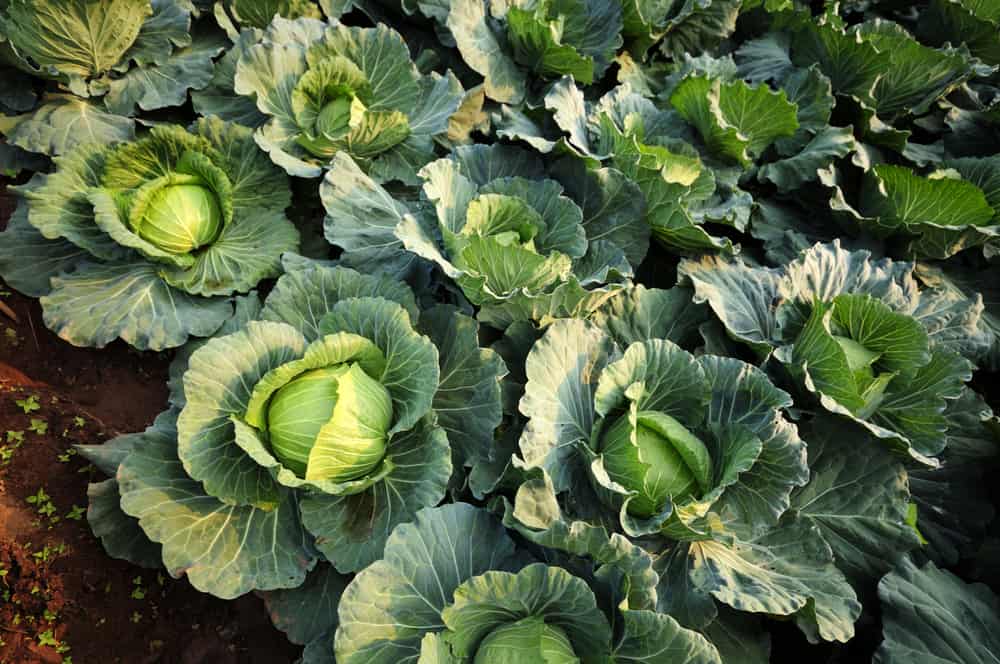As the temperature continues to get colder outside, you might be looking for vegetables that can handle the cooler temperatures. One perfect example is cabbage. It contains a lot of dietary vitamins and minerals. Even though cabbage can be grown in the summer, it doesn’t like too much heat. Therefore, it is important to think carefully about when you decide to plant cabbage. Then, how long will it take your cabbage to grow? When can you harvest it? It depends on the growth conditions, but it usually takes anywhere from three to six months to harvest cabbage. Therefore, you should take a closer look at the growth stages of cabbage below. What do you need to know?
Germination
The first stage in the cabbage growth cycle is called germination. First, you should plant the seeds in garden soil or container. Then, they tend to sprout and germinate between 3 and 4 days. When certain conditions are met, the germination process begins. There are several factors that will impact when cabbage seeds begin to germinate. They include sunlight, nutritional content, moisture, and temperature. Cabbage seeds spring to life when they are exposed to the right soil nutrients. The temperature should range between 65 degrees Fahrenheit and 70 degrees Fahrenheit. Eventually, the sun comes out, it starts to rain, and cabbage seeds have everything they need to grow up big and strong! This is when the germination stage begins.
Before you plant the seeds in the ground, you may want to use a kit to test the soil content. That way, you know the ph and mineral content or appropriate for the growth of cabbage. If you need help altering your soil, you may want to get some fertilizer that can help you. Or, you might want to reach out to professionals that can help you improve the conditions of your soil.
Seedling
The second stage of the cabbage growth process is called the seedling stage. That usually follows the germination stage by approximately two weeks. Essentially, this is your cabbage plant transitioning from a seed to a young plant. Your plants might start to develop young leaves and roots. You might also notice a young stem pop out of the ground at this stage. When you see this start to happen, you know your cabbage plant has transitioned to the seedling stage.
During this time, it is still important for you to make sure your cabbage plant has everything it needs to grow up big and strong. Because your plant is so young, it does not have the capability to make its own food just yet. Therefore, your leaves, shoots, and stems need to be supported appropriately. You should pay close attention to how your plant is doing, and you may need to supplement it with some additional nutrition. As long as you take care of your cabbage plant during this time, then it should progress to the next stage.

Vegetative
After the seedling stage, your cabbage plant is going to enter the vegetative stage next. The embryonic structures expand and elongate, allowing them to complete the complex physiological tasks that are required to help the plant grow. These activities include transpiration, photosynthesis, water absorption, and nutrient absorption. These activities gradually spread out throughout the plant as it grows and develops.
This is the stage when the embryonic structures of the plant truly grow and reach adulthood. There are true leaves, true roots, and true shoots. Now, the cabbage plant has the ability to make its own food. While it is still important for you to take care of the plant during this time, it has the ability to support itself as well. This will create a positive feedback loop, allowing your cabbage plant to thrive even as the temperature changes outside. Make sure the plant is protected against potentially harsh conditions, and keep an eye on it as it grows and develops. It should grow into a beautiful plant before it progresses to the final stage.
Flowering
Finally, the last growth stage is called the flowering stage. The structures have reached peak maturity, and you should start to see flower buds sprout from the cabbage plant itself. This means that the cabbage plant is able to produce seeds that ensure the continued growth of the species itself. When you start to see cabbage plants produce seeds, you know they have reached the end of their lives and that the plants are going to die up in the near future.
This is also an opportunity for you to restart the row cycle of cabbage. You may want to harvest some plants that you can use as food, but you also need to take advantage of the seeds to help make more cabbage in the future.
When your cabbage plants start to produce seeds, you may want to take them and plant them again. Then, you will have to wait for them to germinate. Keep in mind that the entire growth cycle takes between three and six months, so it will take a while before you start to see the cabbage plants grow again.
Grow Cabbage Successfully
This is a brief overview of how cabbage goes through its growth cycle. The first stage is germination, which will last a couple of weeks before it progresses to the seedling stage. Then, you need to protect the plant until it is able to produce its own nutrition during the vegetative stage. When you see your cabbage plants begin to flower, this is a sign that they are going to produce seeds in the near future.
Even though it is true that cabbage can handle colder temperatures, you still need to make sure it has enough sunlight, moisture, and nutrition to thrive. You also need to keep a close eye on the temperature conditions. If you think carefully about what cabbage needs to survive and pay attention to these conditions, you should be able to grow strong, healthy cabbage plants.
